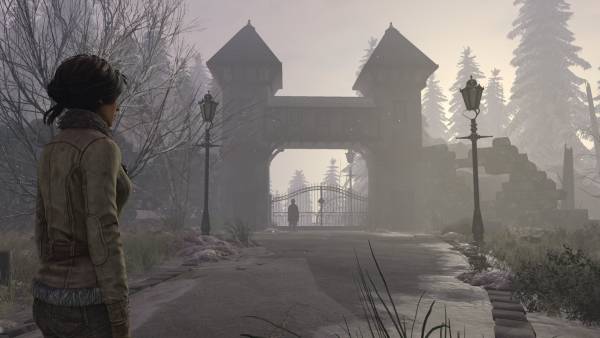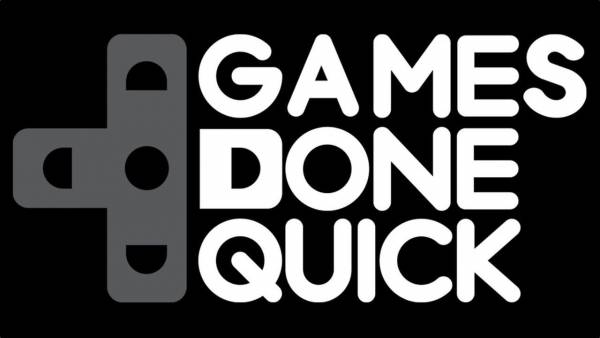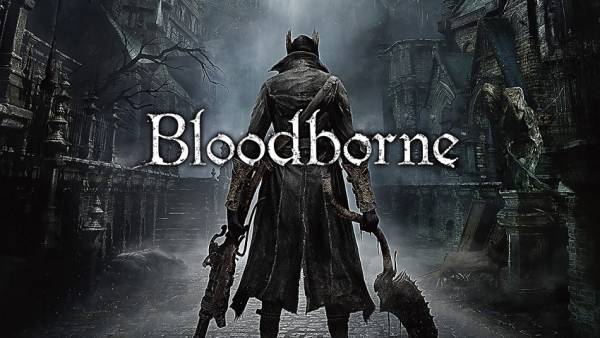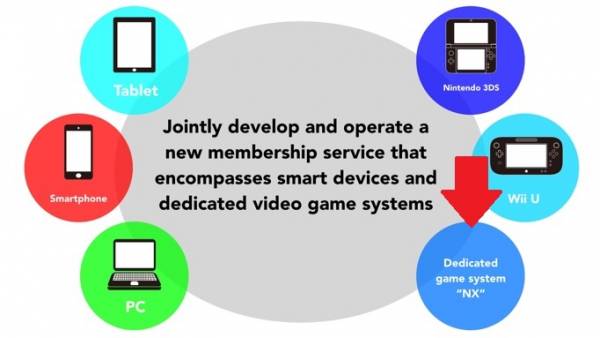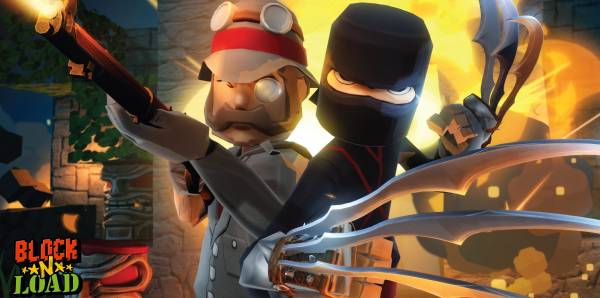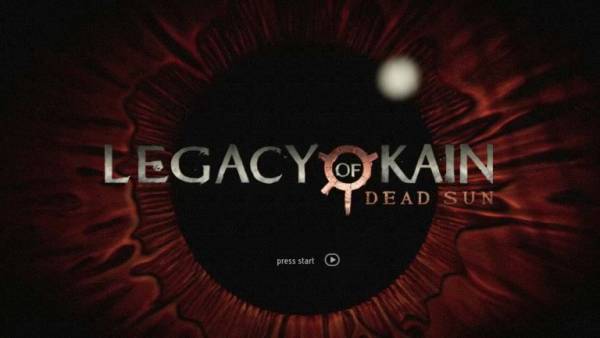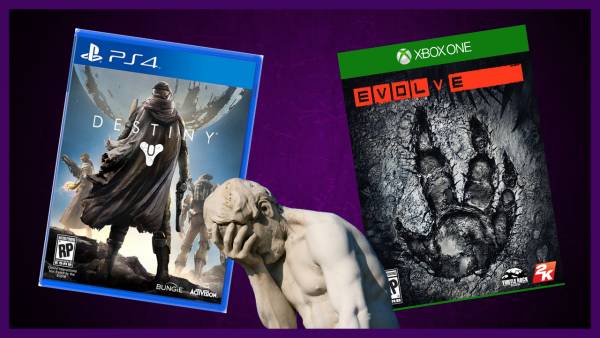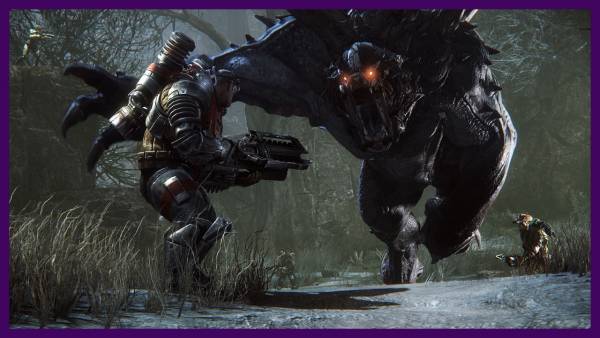I recently had the chance to speak with the fantastically named Guillaume Boucher-Vidal, founder of Nine Dots Studio Inc, about his recently released title, GoD Factory Wingmen. It was a pretty mammoth interview so it’s coming at you in two parts.
Also seriously, why isn’t my name that cool?
Ian: So for those that don’t know, your game is GoD factory Wingmen, a space combat simulator with a focus on teamwork, with two teams of four battling it out to destroy each other’s carrier.
Guillaume: That’s right.
Ian: So the space combat sim genre has been around for a long time. I’m not that old and even I remember playing things like Jedi Starfighter when I was younger. Arguably though, there hasn’t been a huge amount of innovation in the genre for a long time, so what would you say is the big selling point of GoD Factory over other games in the genre?
Guillaume: Well one thing, to make sure we’re on the same page, what you would perceive as an innovations are not necessarily the selling points. For instance with GoD factory we’re trying to sell mostly the competitive and co-operative aspects and the multiple strategies angle. But I do think we’re bringing some nice solutions to problems with space combat sims that would not be, by themselves, something to sell a game on.
Ian: Right.
Guillaume: To me the most egregious issue of space combat games is the fact that you’re just interacting with your HUD. All you have to do is bring your cursor to your target, wait until it locks on and fire your missile. Fire and forget and in you’ll hear ‘target destroyed’ as your missile reached its target. This very long ranged kind of fight has always been very boring to me.
So from the get-go when we started making GoD Factory, our intent was to make the combat as close ranged as possible, which changed a lot of the usual space combat dynamics. So for example, being so close ranged meant that we needed very automated weapons and we would need to focus much more on mobility because that’s the fun part of fight; getting up close, chasing and having to do these special manoeuvres and making sure you don’t hit anything whilst you shoot at your target. That’s what we wanted to get right.
The other aspect is the customisation. You know you build your ship by choosing your wings, your body, your cockpit and that’s not something I’ve seen done very often. I mean there’s Armoured Core by these are mechs. So we take this aspect of letting you design your ship and deciding what’s important to you, do you prefer mobility, do you want more firepower or do you want to be very defensive and able to take a lot of damage. Or do you want to be in a support role, ranged or up-close etc. We made sure we had a lot of options.
In most space sims you’d feel the difference in whether your ship feels heavy or nimble, but I felt the range of choices was always a little lacklustre and that’s definitely not a problem in GoD Factory.
Ian: You touched upon a couple of things I wanted to talk about. You said one of the big focuses is on the movement mechanics. I read the gameplay controls document that comes with the game and it warns you; if you’re used to modern day, mainstream games then GoD Factory will be a lot to take in because so much has gone into the movement mechanics.
It’s certainly refreshing to see a focus on movement. There is an explanation as to why things work a little differently, you know, talking about how there is no friction in space so things are going to work differently.
Guillaume: Yeah we had to cheat a little there, because we wanted to make something that feels authentic, but zero friction is something we’re so not used to that it leads to so much frustration. It’s not just a matter of ‘oh you dumbed down, you’ve gone casual’, it’s not that, it’s just that you’re having way more fun if you have a little friction because then you feel like the ship is responding to you, so we had to strike the right balance. There are the manoeuvres like the drifts which let you move without friction for a small time before going back to normal. We don’t want you to feel like you’re just controlling a plane but still, we needed to have some level of friction to make sure the ship is manageable for people other than astronauts.
Ian: You managed to head of my question perfectly, but I’ll ask anyway. Were there any other points where you had to compromise on real-world physics for the sake of fun?
Guillaume: Well yeah, one very simple aspect is the sound. Of course in space there is no sound because there’s no atmosphere so you’d hear almost nothing in space. For a while we entertained the idea of having a special sound option which would really simulate space, so you’d only hear what was happening inside your cockpit and what’s directly colliding with your ship. It’s something we wanted to pull off and it’s something that might come post launch, but for now we had to drop it because it’s way more work than it’s worth in terms of what it adds to the game. We had to make the best choices as to what would be a smart use of our resources.
 Alas poor Player player, I knew him well.
Alas poor Player player, I knew him well.
Ian: I noticed that GoD Factory will be supporting the Oculus Rift and that sound setting would be amazing for really immersing you in the experience though.
Guillaume: Yeah we thought of that too, increasing the simulation aspect of the game but I think the Oculus Rift is often seen as a tool for creating the most perfect simulation experience and it’s not necessarily what you need to have fun with it. Like we had a bug when you come of the dock in your ship. Normally in Oculus Rift mode you’re always in the cockpit view, but here we had a third person view; it was accidental but I found it very agreeable, almost like this voyeuristic aspect where it’s like ‘oh I’m seeing someone flying a ship…oh wait that’s me’ It was a weird disassociation but at the same time it was fun and I think the one thing the Oculus Rift is solving for a lot of games is, it’s meaning that the camera is no longer an issue.
In modern games, in my opinion, controlling the camera has always been one of the worst hurdles to overcome because it’s not something you want to do. You want to be controlling your avatar, not the camera. It’s too much to do at once and it always disconnects you from the experience. I’m a big fan of automated cameras for that reason, but of course that comes with a lot of collision issues and such, so that’s one problem the Oculus might actually solve for third person games.
Ian: That’s interesting, I wouldn’t have thought about using the rift for a third-person game but it makes a lot of sense.
So to backtrack a little, let’s talk about the control system. In order to have such a wide range of manoeuvres available, the control system has to be pretty intense. I got the hang of things fairly quickly in training, but as soon as you’re being shot at, it’s very easy to fall to pieces and it’s all ‘argh, what am I doing, what button makes me strafe left’? Do you worry at all that having such an in depth control system will deter new players?
Guillaume: Well for sure, we’ve been aiming at the more hardcore audience, but also I’m always surprised how popular the RTS genre got, considering how much there is to learn in order to be able to play it efficiently, so I’ve been kind of using that as a reassurance that you can be successful without being 100% easily accessible, but at the same time I do think we have something that’s way easier to get into if you’re using a controller.
If you play with a mouse and keyboard, we wanted the mouse to simulate a joystick and that of course, lead to some issues with mapping etc. But we’ve managed to fit it all on one controller as well, which is especially important for me as I grew up with consoles more than PC. This isn’t the case for everyone on the team but for me playing with a controller is way more natural than a mouse and keyboard.
Ian: I have to admit, I’m a filthy console gaming peasant as well so I played with my Xbox One controller and I was impressed by how the control system worked. With a controller, you have a limited number of inputs but you seem to have nailed it down. I don’t remember being unable to do anything via controller.
Guillaume: *Laughs* We had a lot of headaches with making sure you could do as many things as possible on the controller whilst respecting the PC gaming aspect, not cutting features for the sake of the controller. The hardest thing was simple joysticks; there are a wide variety of joysticks with varying numbers of axis. We’ve got this very simple Logitech joystick that only has a couple of buttons and doesn’t even have three axis movement so we tried to configure it so that you could do pretty much everything you needed to, even on such a basic joystick. It may not be as good as if you had a more specialised peripheral but it will still do the job.
Regarding the controls, I had some inspirations from a game that might be unexpected; Starfox 64. If you remember, you could use the C button and down to do a 180 degree turn. We haven’t kept the method of input exactly, we have one button that is used for all manoeuvres but I think if it wasn’t for that console experience, we’d have maybe a more traditional type of input.
Ian: So another recent title I played in the space fighter genre was Strike Suit Zero. One of the things that struck me the most when coming into GoD Factory was the sense of speed. Strike Suit is positively pedestrian in comparison.
Guillaume: You’re making me so happy, I’m going to shed a tear.
Ian: *Laughs* I’m guessing this speed is a consequence of the multiplayer influence. You want people to be getting up close, getting stuck in really quickly?
Guillaume: Yeah, but it’s also for the sense of scale. Like you said, there is no friction in space. Why wouldn’t you be able to go incredibly fast? I don’t know if you’ve tried to make a build specialised in high speed, so for example you could take a human ship with 1400 speed, you can really zip through the battlefield in a few seconds, it’s really exhilarating.
Like I said before, usually you have either slow and pedestrian or the Unreal tournament style of ludicrous speed but you feel like you’re not even in control, so it was a hard balancing act, but we used to range of the weapons as a way to reach that compromise, making sure you can’t hit something 2000 units away from you.
 GoD Factory really does have an astonishing sense of scale to it…especially when you fly past one of those big dead robot god things.
GoD Factory really does have an astonishing sense of scale to it…especially when you fly past one of those big dead robot god things.
Ian: I did notice that the weapons seem pretty close ranged. I’d be flying towards a carrier, lining up my shot thinking ‘come on guns, let me fire…fire…please’, but it works with the play style of the game. You’ve got to get in close and manoeuvre properly, you can’t just sit 8 miles back and fire lasers into it.
Guillaume: Exactly.
Ian: So you mentioned the customisation options earlier. There are four races you can play as, and within them you can customise your ship’s component parts. How meaningful a change can you make to your ships play style through these customisations?
Guillaume: I would say if you try to play the same way in different ships, you’re going to lose big time, so I’d say it’s a very meaningful difference. So for example, the machine head on the human ship is a very costly cockpit that means whenever you trigger a manoeuvre you gain a small healing boost. So in your play style for this ship, you’re going to have this habit for using manoeuvres as often as possible, whereas you could play as an Arblos, which has a large pool of energy (needed for manoeuvres) but it doesn’t regenerate as quickly as a human ship, meaning the same strategy wouldn’t work.
We also made sure that the weapons all had this very different feel to them, so a shotgun feels very different to a laser beam. Lasers are very ammo efficient, you just lock your target, fire and you know you’re doing constant DPS (damage per second) on him, whereas with a shotgun your fire rate is reduced so you have to make sure every shot counts. There are also weapons you can fire without aiming, which are good for bombing the carrier.
Ian: That’s a lot of customisation by the sounds of it. How much of a nightmare has it been to balance all of these different options against each other?
Guillaume: *Laughs* Well it’s a nightmare only if you don’t enjoy it right?
Ian: I guess so
Guillaume: I knew from the get-go it was a pretty ambitious undertaking and at first I was fool enough to think I could handle it all by myself, but I resigned myself to the fact that I needed to hire an additional game designer just to make sure we had the right balance; we had a lot of back and forth between us on this.
Good game balance isn’t just about number crunching, the qualitative aspects are just as important as the quantitative. So between 75 DPS vs 72 DPS, you know which one is better. But say the 72 DPS weapon has the ability to slow your target, then it’s harder to know which one is best. We tried to put as many of these types of aspects into the game, to the point where the game balance becomes very subjective. One player might prefer this play style, one might prefer another but they’d both be right.
By far the hardest thing to balance was the costs of all the components, because you have to balance your heat, power and weight. Having three gauges to keep an eye on was pretty nightmarish for sure, but it allowed us to have something more complex than just a currency or points system; that would have been a little too simple.
So power is associated with speed and shields, but you’re going to have to pick one to concentrate on. Weight is things like ammo efficiency and defence, whilst heat decides how aggressive you can be, how much energy you have for manoeuvres and the fire rate of your weapons.
Some people might decide they want to focus on a heat build or a power build, whilst others might pick a certain weapon first and then choose to focus on whichever area compliments that best. There is a lot of choice here.
…to be continued.
Stick around for part two when talk more about the world of GoD Factory, as well as discussing what it’s like to run your own indie studio, Kickstarter and most importantly, is it coming to consoles? In the meantime, GoD Factory: Wingmen is available now on Steam so if we’ve peaked your interest, give it a look.
